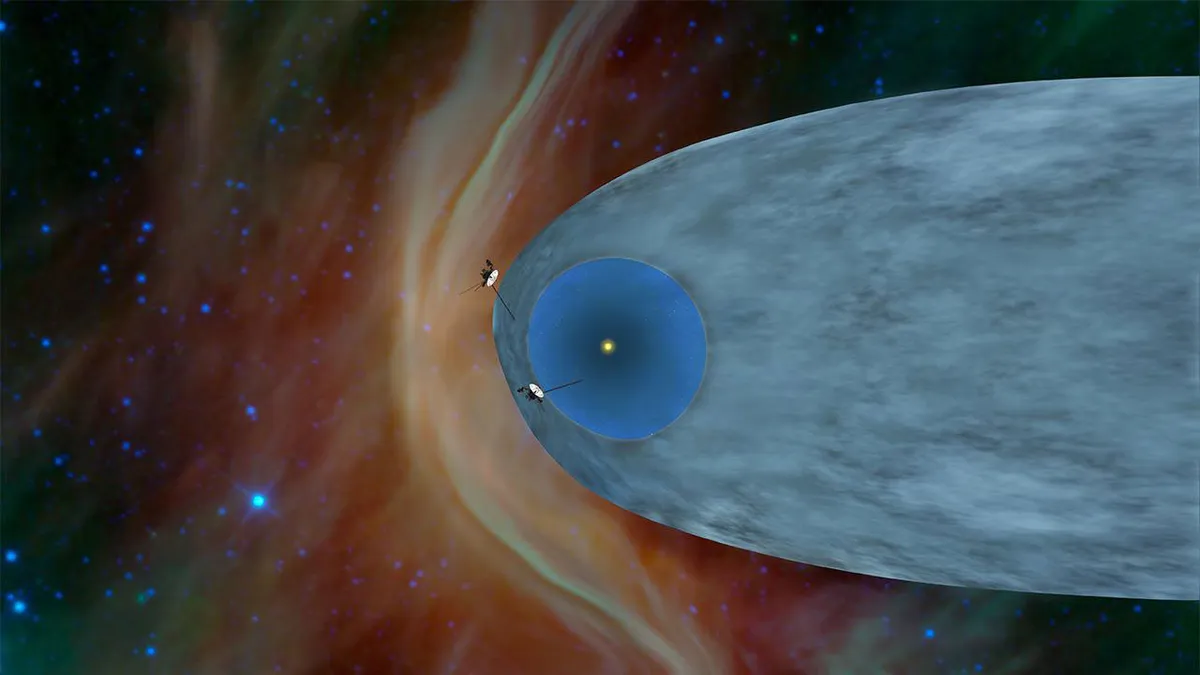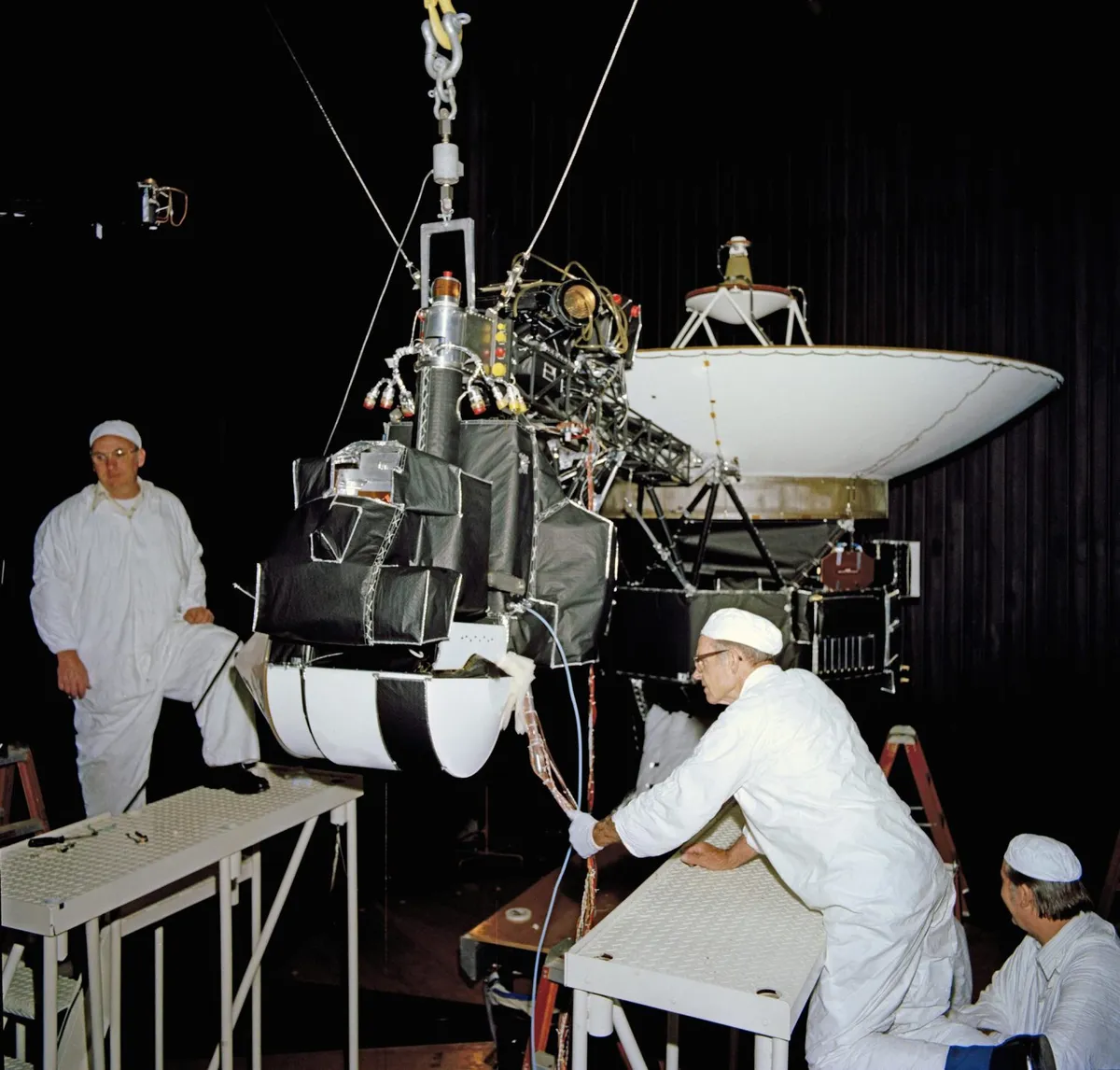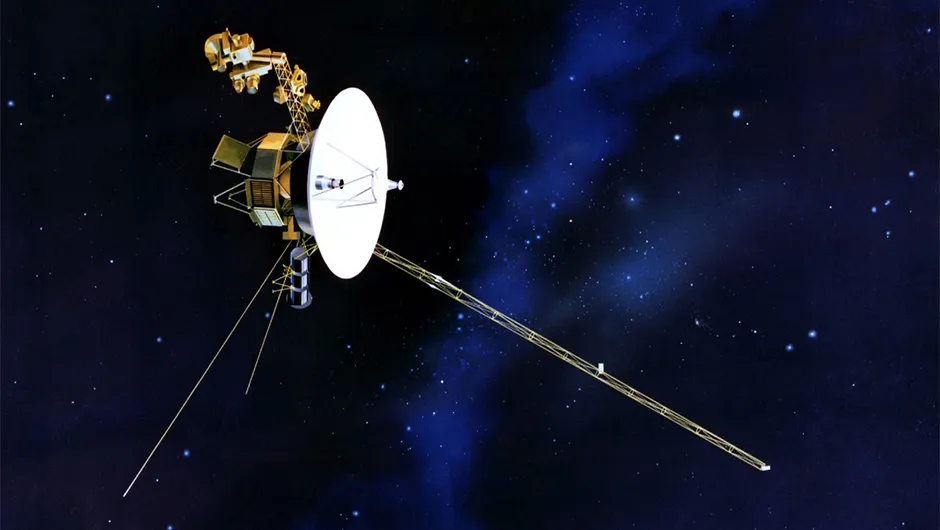Voyager 1 is back in contact with mission control after being off-line for five months.
On 14 November 2023, the spacecraft suddenly began transmitting unintelligible data instead of its usual engineering and science report.
The spacecraft still appeared to be receiving commands and operating normally, allowing the team to diagnose the problem lay in Voyager 1’s software and develop a fix.
On 20 April, the team received the first understandable message back from the spacecraft in five months.
After fearing the worst, scientists are rejoicing at the successful recovery meaning Voyager 1 can continue its unique investigations of the region on the outermost limits of the Solar System.
Voyager 1 along with its sister craft, Voyager 2 have been sailing away from Earth since they launched in 1977.
In 2012, Voyager 1 passed through the heliopause, the boundary at the edge of the solar wind’s influence and the start of interstellar space.
The twin Voyagers are the only spacecraft to have ventured into this region, making their invaluable data worth fighting for.
What was wrong with Voyager-1?
It took the Voyager team several months of investigation to track down the problem, eventually isolating cause of the error in March 2024.
The issue lay in one of the spacecraft’s three onboard computers, the flight data subsystem (FDS).
This is the system responsible for collating Voyager’s science and engineering data before sending it back to Earth.

It appears that one of the FDS’s memory chips has stopped functioning, and the lost code stored on this chip was rendering the rest of the data unusable.
With no way to fix the chip, the team instead had to develop a work around to keep Voyager 1 functioning.
Read our interview with Voyager scientist Linda Morabito
How did they fix Voyager 1?
The team planned to move the code previously stored on the broken hip to a new location on Voyager.
Due to the size of the code, there was no single location with the capacity to hold it in its entirety, meaning it would need to be split up and stored in separate locations across the FDS.
Not only did the code need to be split in such a way that it all worked together, but the team also needed to ensure all other parts of Voyager 1’s programmes which referenced the code still knew where to look for it.
To test the fix, the team initially focused on getting the engineering data back, sending Voyager 1 an update on 18 April.

As Voyager is currently 24 billion km (15 billion mi) away, it took the signal 22.5 hours to reach the spacecraft and then another 22.5 hours for Voyager 1’s response to return.
After a nail-biting two day wait, the signal came back on 20 April confirming and for the first time in five months, Voyager 1 was sending back something the team could understand.
The engineering data will allow the operations team to confirm the health and status of the spacecraft.
If all is well, then they will concentrate on relocating the other affected areas of Voyager’s code so it can start returning its science data.
Read more about how the team fixed Voyager 1.
How much longer will the Voyager spacecraft last?
After 47 years in space, both Voyager 1 and 2 are beginning to reach the end of their usable lifespan.
Both are powered by radioisotope thermoelectric generators, using radioactive material to generate electricity.
As this radioactive material decays over time, its power output slowly decreases.

For many years, the operations team have been gradually shutting down heaters, back-up systems and other non-essential elements to ensure their key operational and scientific instruments have enough power to function.
However, the operators will soon be forced to begin shutting down science instruments, most likely starting around 2026.
Even once all its scientific systems are shut down, Voyager will continue transmitting a locator signal back to Earth, which will remain in range of the Deep Space Network until 2036.
At that point, the Voyagers will sail beyond our sight, but will continue to travel ever outward into the depths of the Universe.

